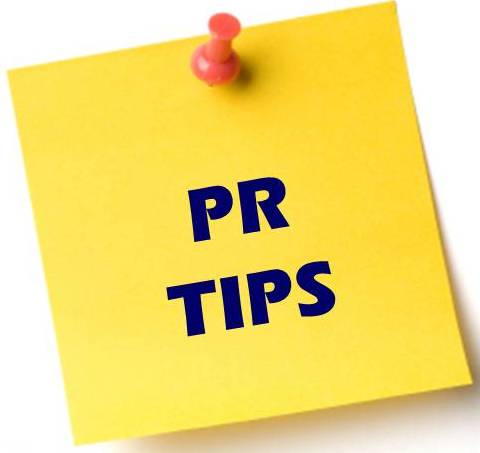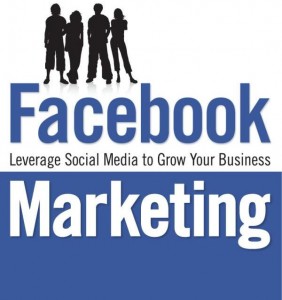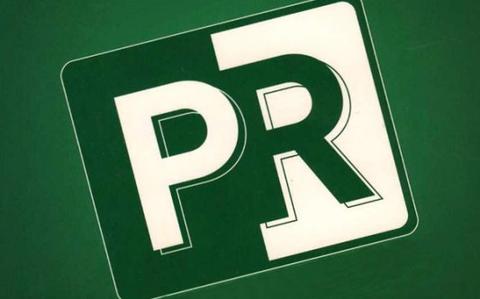Posts Tagged ‘public relations los angeles’

AJGpr loves to read blogs about public realtions and we are a fan of PR in Your Pajamas recent post – 10 Times-Tested PR Skills That Will Never Go Out oF Style. Here is what PR professional Elena Verlee has to say:
Here at PR in Your Pajamas, we often talk about PR trends and the new demands they place on PR professionals. These fast and frequent changes keep us on our toes, requiring us to develop new skills on the fly.
But in this post, I’d like to go back to basics. Let’s remember the time-tested, essential PR skills we need. These skills are so important, so foundational, that I dare say they have and will continue to withstand the test of time. They transcend technology and fads.
Good Old-Fashioned PR Skills
1. Writing
Forget what they say about how people no longer read these days. Even if the majority of your audience prefers video to text, you still need to know how to communicate by putting words on paper.
I’d like to point out two specific types of writing that we need to know and master to succeed in PR. The first is journalistic writing. Knowing what’s important, and communicating the essential parts first. Writing in a way that grabs the attention and interest of readers immediately. If you’re more of a creative writer, don’t despair. Journalistic writing can be learned.
The other type of writing we need is copywriting. Copywriting is simply selling in print. It’s using words to hook your audience, align with their personal goals, and motivate them to do what you want. Copywriting is applied, not only in the written word, but also in radio and video. The basis of copywriting is persuasion, so if you know copywriting, you also inadvertently become a more effective persuader.
2. Interpersonal Skills
PR is all about interacting with others. You need to build rapport and effectively relate with the C-suite (whether your own company’s or your client’s), technical experts, sales people, the marketing staff, journalists, customers. Strong people skills will open many doors for you, and make PR work much easier. On the other hand, if you hate interacting with people, you’ll probably hate PR work.
3. Negotiation
Negotiation skills are also essential. You negotiate with decision makers to get their buy-in on the PR campaign. You negotiate a story with journalists and editors. If you know how to create win-win situations, you’ll be successful in PR.
4. Media Awareness
Can you be good in PR and dislike actually consuming media — watching TV, listening to the radio, surfing websites, reading the news? I doubt it.
In PR, we need to know all about the media. What media are available in what formats, who runs them, who consumes them, what content they provide, and who creates the content. These things are location and culture-specific.
Aside from knowing the media, you also have to be able to think like the media. You need to have a nose for news. Be able to put yourself in a journalist’s shoes. Can you sniff what will become the next big thing? Then you’re one step ahead of your competitors.
5. Research
PR practitioners need to learn tons of new information with each new client or campaign we have. It’s necessary to know how to find the information you need. Speed reading comes in handy for this. More importantly, you must have the ability to evaluate the information you do find and “connect the dots” – synthesize them in a useful form.
6. Strategic Thinking
Thinking strategically includes the ability to set objectives and formulate a plan to achieve them. It also means taking calculated risks, and recognizing opportunities and maximizing them. In PR, where the solutions aren’t always straightforward, a strategic thinker can create opportunities where none appear to exist.
7. Attention to Detail
You have to anticipate needs and problems before they arise — and be ready for them. By being detail oriented, you think of the smallest things, including those that may not be so important, but could spell disaster if neglected. Think typos on press releases, forgotten appointments with journalists, and having enough copies of your media kit. Small stuff, yes, but someone’s got to stay on top of them!
8. Management
Aside from interacting with people and communicating persuasively, as a PR practitioner, you’re also a manager. You manage resources, time, and people, including yourself. You have to be realistic with your budgets, know how to mobilize human resources, and produce results.
9. Statistics and Measurement
As if being a good writer weren’t hard enough, PR professionals also need math skills. You measure and monitor inputs, outputs and results, so you need a good head for numbers. Understanding statistics and data — and knowing how to use them for high-impact communication — is a critical PR skill that will remain relevant long after your latest smartphone or tablet has become obsolete.
10. Business Sense
Finally, PR pros need to have good business sense. We don’t do PR for PR’s sake but to help contribute to the bottom line of our or our client’s business. Having business acumen is what you need to be taken seriously by clients or the C-suite.

AJGpr is on Manta. In fact, we asked the question “How Best To Use Manta for Small Businesses?” and found the answer in blog by Stephanie Taylor Christensen that she wrote for BusinessNewsDaily.com.
But another great reason to be on Manta is you get these fabulous tips sent you by email like:
Get More Readers with Compelling Subject Lines
![]()
or
How to Rate Your Online Brand Image
Just another reason to get on the Manta bandwagon.

AJGpr, a Los Angeles PR firm, found this “Public Relations Best Practices Top Sheet” at Group Y Network. Here it is:
Starting a PR program from the ground up may seem daunting. But, with some common sense, homework and the right tools, it’s a lot easier than you think. The advice here is gleaned from some of our favorite skate-savvy editors and should help you get a step ahead, whether you are starting from the ground up or just need some refresher ideas.
1. Know what “news” is. News is not a new shoelace color, a seasonal product launch (i.e. Holiday styles and colorways) or a team photo shoot. News is an innovative technology, signing of a key athlete or announcing a unique branded event your company is hosting. Take yourself out of your brand’s shoes (ha) and honestly ask yourself: “Would anyone else find this interesting/important/unique?” If the answer is Yes, it’s news.
2. Let the media know about your news in a timely and concise fashion. The old “Who, What, When, Where and Why” is pretty much the best guide. Also be sure to plan out your timing; telling someone about an event that is happening tomorrow won’t get you far… Most consumer mags work 3-4 months ahead of time and trades, 1-2. Online has a much quicker turnaround, obviously, but a solid “heads up” will be appreciated by any editor. Some good lead-time with a reminder email sent 48 hours before the event is often the best equation.
3. The editors’ job is to report on what readers want to read, so let them do what they do best. Think of your pitch like a job interview: present your strengths, your best story, then let it go. Follow up is fine, but don’t be the needler—“Why didn’t you run a story about my shoe/deck/photo shoot?” That will quickly get you pushed far down the priority list. Honestly.
4. For product stuff it’s sometimes best to send the gear out first and ask questions later. Address it to an editor and include a quick but polite hand-written note asking for placement. Let them know if it theirs to keep or a sample that needs to be returned. There is no guarantee that this approach will work but a box full of fresh gear is always more appealing than a fuzzy jpeg in the morning email line-up.
5. Build relationships. Just because an editor doesn’t run your story once, doesn’t mean it won’t happen next time. Being the resource who is quick to respond, easy to deal with, and delivers on time will over time pay off the big dividends. Look at it long term—be the guy/girl who the editor wants to reach out to because he knows it will be an easy transaction, not the guy that complains or won’t deliver on his promises. Editors deal with so many flakes over the course of a day that just being courteous and doing what you said you’d do will put you into the top percentile.
6. Plan, plan, plan. The best PR programs plan out many months or even a year ahead of time. Look at what products or events you have coming down the pipe over the next year (or even two!) and build a PR plan around those items. Having your materials and timelines together allows you to have perfect timing—i.e. corresponding your product shipping to stores or athlete competing in the Dew Tour with secured editorial in magazines and online.
7. Editors are always busy and sometimes lazy*. Ask yourself before initiating contact: Am I making this person’s job easier or harder? PR hacks who make editors’ jobs easier are often the ones that get results.
8. Email is the best way to communicate. Feel free to send a friendly follow up if you don’t get a response.
9. If you are pitching a mainstream publication, there are some story lines that are always popular: the young person who follows his passion and starts a successful company; the local company that most people haven’t heard of but that is doing well in a niche industry; stories that take readers into a hard-to-understand yet interesting industry in their back yard.
10. Even big newspapers these days are desperate to build page views online. Many are posting shorter stories on blogs, and the threshold for getting published is much lower. Check out every publications online presence and send emails directly to writers, many of whom are eager to make story quotas.

Five Steps for a More Effective Facebook Page for Small Business
Emily Weaver wrote a great tip on Manta that AJGpr, a Los Angeles Public Relations Firm wanted to share. Here it is.
Representing your small business online can be difficult, but if done the right way you can reach an unlimited amount of customers. With social networks like Facebook, Twitter and LinkedIn it makes it easier for small businesses to truly stay in touch and on track with both potential and current customers.
1. Start with a Facebook Page
Facebook is generally used for social interaction anyway, so putting your business on Facebook will be second nature if you already use it for keeping in touch with friends and family.
- If you already have a profile on Facebook, you can add a page for a company or small business. This way you can still keep your personal profile active and under the same account.
- A great way to test out any new page online is to have a focus group you can trust. Who would be better than your friends list on your profile page.
2. Stay informed, get a routine
As a small business owner you want to keep your Facebook page up to date for customers. Not only does that fall under the category of posting content on a regular basis, it also means to be realistic when it comes to results.
- Post content – a photo, a news story, what you’re doing during the day – something that customers can only get from liking you on Facebook. If you get one ‘Like’ out of it you’ll be thrilled, but don’t expect it all to come at once.
- Have a goal of what you’d like to see happen out of what you post, just don’t get too distraught over a question you ask that gets no answer. As for posting, make it a habit to update your page at least once a day.
- There never is a wrong time to post, just as there isn’t a right time to post; whenever you get the time, whenever you have the content. Make it engaging for your customers so that they can get an idea of what you’re about!
3. Update your status with style
The status can be very daunting, but it’s an open space for you to share content with your customers. That’s exciting! Before posting, you might want to map out what you want to share.
- Do some research on other brands similar to yours and see what they’re posting. For instance a local bakery might post a photo of their famous hot chocolate, or a diner could post a question about what customers would like their special to be for dinner that day- something to involve customers, something that will keep their attention.
- Don’t think your content has to be completely formal. Make it your own, and represent the voice of your small business.
- Make sure to post mostly open-ended questions or thoughts to get more of a complete response out of your fans, this way you’re communicating back and forth with the person who matters most – the customer.
4. Keep in touch with customers
This may be an easy task, or a challenging one, depending on what you want to do.
- As the owner of your small business Facebook page you’ll be able to see who has ‘Liked’ your page. One way you can keep customers engaged is by sending them a message as soon as they ‘Like’ your page. This is a great way to let your new fans know that you’re going to be there to respond and interact with them promptly.
- Another way to keep customers engaged is to answer them via the messages section onFacebook. Some may just send you spam, but others will probably have legit questions. This section is something you’ll want to keep an eye on each day.
- In addition to your daily posts, answering your customer’s questions in a timely manner can only give them a positive perception of you. By keeping in touch with customers and answering their questions and suggestions you can keep a connection with them and they’ll definitely have nothing but good things to say about you and your business!
5. What you can offer fans
Think about it- they’re ‘Liking’ your page. What do they get out of it?
- If you can get something like a promotion going for your fans, or a coupon for 10% off your latest inventory it would guarantee their satisfaction and possibly get them to spread the word about ‘Liking’ your page.
For more ideas on what to post or just for best practices, visit Manta on Facebook to get an idea of how you can use Facebook for your small business.

 AJGpr , A Los Angeles PR firm, found this great list of advice for PR professionals – especially newbies when dealing with journalists from Ragan’s PR Daily.
AJGpr , A Los Angeles PR firm, found this great list of advice for PR professionals – especially newbies when dealing with journalists from Ragan’s PR Daily.
- Don’t be afraid: Reporters need you as much as you need them – sometimes more if you’ve got an awesome, sought-after client. They are being challenged to churn out content FAST and they’re often relying on others (you) to provide insight, quotes, access to spokespeople and in some cases, help educate them on a complicated or new (to them) topic – all by deadline. It’s a mutually beneficial relationship so don’t be afraid to make that first contact – you might be surprised.
- Get connected: I don’t advise blindly connecting to every reporter you’ve ever heard of on LinkedIn, but after that first client briefing or email trail, connect with them on LinkedIn. Even easier, follow them on Twitter or Google+ and subscribe to their feed. My best media contacts are people that I’m connected to on LinkedIn and I truly believe that sometimes, because they see my face pop up on their news feed, they remember to reach out with a source request.
- Reporters need to network, too: More than ever, reporters are being measured by their social networks and how many people – hits – they can get to their stories and to then go back and share with their own networks. That is stressful! That being said, reporters know PR pros tend to be outgoing, well-connected individuals, and they may lean on you to broaden their reach. I’ve connected a few reporter “friendlies” with other PR pros for stories that have led to success for all involved. I also sometimes send a reporter, if they’re in my region, a link to a networking event they might find interesting or that I’m attending.
- Freelance writers rock: And there’s more of them then there were four years ago. Get in good with a freelancer and you won’t regret it – these are smart, driven and often very KIND people who at any given point could be writing something super niche, for a “smaller” outlet, and then next thing, contributing regularly to a column in a major business publication. Because of the nature of operating solo and/or remote from the main news hub, freelancers are more likely to reach out with a media request and ask for help.
- Share the S*** out of their news — and not just when it’s yours: You have a reporter friend and they just wrote about your client and you’re PUMPED so you like it, tweet it, send it to your Mom (don’t lie, you’ve done it). Your reporter friend appreciates this because they want more web traffic to their article and in many cases today, their boss is counting how many hits, RTs, comments, etc. that article receives. On several occasions I’ve actually had reporters email me after coverage hits to let me know “Yay! It got a bunch of comments” or “Wow! The story got X number of click-throughs” and then thanked me for sharing it on LinkedIn or Twitter. But it’s not just YOUR coverage that should be shared – like any solid PR pro you want to be consistently reading your media “friendlies” work and sharing it with your network. Reporters recognize this and will not forget you when it comes time to write another story.
To that PR newbie I would then say: At the end of the day, if you’re doing your job right, a reporter will not only see you as a resource, but as an industry peer. And that makes public relations more valuable, powerful and better in terms of what we can offer our clients.

Elena Verlee writes in her blog about the use of humor in PR. AJGpr, a Los Angeles PR firm thinks the topic is interesting enough to share with you.
Here it is:
What if there was a way for you to differentiate your PR from the rest of your competitors — but it’s slightly risky and not that easy. Would you try it?
Such a PR tool does exist. It’s called humor.
According to Marketing Profs, few companies are using humor in their marketing and PR that, whenever a company does — and does it well — it’s sure to stand out, especially among technology companies.
“High-tech suffers from terminal seriousness,” says Kathy Klotz-Guest in her article, “Humor in PR: Can You Hear Me Now?”
Companies that do harness humor in their PR are sure to catch the attention of media and the public.
Humor is also effective at engaging your target audience and getting more mileage out of social media.
“Consumers are, in fact, willing to engage with companies and brands in today’s online social forums,” says Aaron Perlut in his Forbes article, “Humor Can Create Engagements.”
Granted, using humor carries some risk. Context is everything, for one thing. If you have a global audience, your North American markets may get the joke, but your Asian markets may end up scratching their heads.
Furthermore, being funny does not excuse you from offering real news. Your PR materials, while humorous and entertaining, still have to have news value.
You have to know your audience to use humor effectively — something which is true of any type of communication, PR or otherwise.
This Brand Gets Humor Right
Many experts agree, self-deprecating humor works best. To give you an example, the satirical publisher, The Onion, once made fun of Tide in a parody article about how companies are using social media to promote themselves. The company got in on the joke, produced the fictitious video described in the article, and generated plenty of social media buzz, not to mention kudos from the writers of The Onion themselves. It was an excellent example of how a brand’s ability to laugh at itself can produce positive PR.
Click here for the original article in The Onion.
Is Humor Right for You?
The next question is, of course, whether humor is a good approach for your company or client.
I think it’s possible to find a humorous angle, if not several, in any product, service, market or industry. However, there are some things to keep in mind:
- Stay relevant. Humor brings positive PR only when it helps expand your core messages.
- Be sensitive. Humor’s impact depends on the attitudes and values of the audience. Be aware of cultural, religious, political and other sensitivities that may make your comedy backfire. This is where having a true understanding of your audience — developed through listening and interacting with them — pays off.
- Steer clear of humor bombs. Certain topics are bad jokes, no matter what. This includes child abuse, exploitation of women, racial discrimination and disabilities.

I read this interesting post on LinkedIn today by PR professional Lisa Arledge Powell that I wanted to share with AJGpr blog readers. I TOTALLY agree with Lisa’s adage “There is no circumstance when the question, ‘Did you get my press release?’ should be uttered.”
4 Things PR Pros Should Never Say To Reporters
Here is what Lisa has to say:
Our business is about relationships. In order to foster the strongest relationships possible, you want to be sure to always communicate with efficiency and strategy and never utter the following statements:
1. “Did you get my press release?” As a current PR pro and former news anchor, I think I can speak for almost every person in the media and say that there are few things more annoying than the dreaded “Did you get my press release?” phone call. Nothing in the world of PR guarantees an immediate hang-up quite like this question. If you sent it, chances are good that they got it. They’ll let you know if they are interested. If an outlet chooses not to run your story, picking up the phone and nagging them is not going to persuade them to change their decision.
2. “What types of articles do you run?” Watch and listen before pitching. Educate yourself about the media outlet and that particular reporter’s stories before pitching them. Your story angle, pitch, and everything you do relating to your media outreach should be customized, and that includes the timing of your outreach. Know the schedule for editorial meetings and deadlines and be respectful of it. If you want the media to take the time to read and fully consider your pitch, show them that you’ve taken the time to read and understand their work.
3. “This is a perfect fit for you.” When you say this, a reporter hears one of two negative things: desperation or bossiness. They might suspect that the story isn’t a perfect fit for anyone because you’re pushing too hard, or you could come across as a know-it-all. There are always internal pressures, personal preferences, and other planned stories to consider. Only the contact you are pitching knows how your idea fits into their big picture. Let them decide whether it’s a “perfect fit.”
4. “You’ll have to be quick; I don’t have much time” Understand the time involved in a reporter’s story preparation. For example, it can take several hours on multiple days for a profile piece that involves an in-depth interview and a photo shoot. Be sure that as a PR person you understand the commitment level of what you’re pitching and that you can deliver if the media is interested. You can often save time by understanding the reporter’s multimedia needs beforehand and mapping out photo or video ideas—or you can directly supply these assets from the start.
If you take this advice to heart, I guarantee that you’ll find a much more receptive news media audience. There is a fine line between nagging and a friendly check-in that no PR pro should ever cross.
If you’re worried that a story didn’t get the results you expected, try pitching it in a different way. What may seem like a dead end can actually be an excellent motivator to get more creative with your conversations with the news media.
Just be sure to never let any of the aforementioned questions or statements slip out. You’re better than that.

The widespread use of social media has fundamentally changed how people communicate and share information and that includes PR professionals.
Twitter, Facebook, YouTube and other social media sites are essential modes of communication and “getting the word out.” The speed of information sharing is faster than ever before and PR professionals have access to a wealth of content that can be shared with consumers and key media influencers seeking solutions to a problem.
Thanks to social media the dynamic between PR professional and journalists/producers has changed. What used to be a monologue is now a conversation. Journalists and producers actively seek information and sources online. Many are active on Twitter or maintain blogs. So communication is faster and getting significant stories to them is easier.
There are so many uses for social media when creating a public relations and marketing campaign. It allows for conversational marketing and is another way to reach influencers. Blogging is also another way PR professionals and their clients can share stories beyond just what goes into a press release. Creating a simple keyword based search on Twitter can connect companies with people at exactly the right time to serve as a helpful resource.
At AJGpr, we embrace multiple channels of social media and use it to complement traditional means of marketing and creating brand awareness.

At AJGpr, a Los Angeles PR firm, we provide GOOD PR because we:
- tell the client what they need to hear instead of what they want to hear.
- recognize that the best “PR strategy” needs good follow-up.
- are not just about the over-glorified launch. AJGpr helps build and sustain a groundswell of brand support — incrementally changing consumer behaviors via a steady stream of relevant and candid communication to both “media” and “consumers.”
- are proactive and cutting edge in idea generation.
- find the balance.
- leverage pre-existing relationships with influential people — relationships built on trust and credibility earned over years of service.
- always “gets ink” because a good story has been well told to the right people.

TOP 12 TIPS TO ENGAGE THE MEDIA
Getting the attention of top-tier and targeted media outlets in today’s media-frenzied world is crucial to increasing public interest in any business, product, or person. Media placements, be it a news story, a human-interest story, or a product review, impacts how the consumer gathers knowledge, learns about trends, and makes decisions.
The job of any good PR specialist is to understand the inner-workings of the media so they can recognize what, when, how and to whom to pitch a story that gets media attention and ultimately the attention of consumer.
The good news is that all media outlets need content, be it hourly, daily, weekly, or monthly. So how does the media determine what stories to cover? And what does a PR pro do to engage the media?
Be it Google or Yahoo, a broadcast news program, a radio show, a magazine, a local newspaper, or a blog, media coverage for your client is key to any successful PR campaign.
While there is no magic formula, AJGpr offers some insight and 12 tips on how a PR specialist or publicist can best engage the media.
- First and foremost ask yourself this question. Is your story/news item actually interesting, important, relevant, or “newsy” enough to warrant attention?
- Does the story write its own headline?
- Does it affect a lot of people, or have relevance to a large sector of the population?
- Does it help resolve or answer a current national or local news question?
- Does it offer an interesting argument, debate, or conflict?
- Is it a medical breakthrough or provide answers to recent research, studies, and surveys?
- Is it a human-interest story? Does it evoke humor or sadness? Is it offbeat or quirky?
- Is it a new product that will change peoples’ lives?
- Is it celebrity related? Famous people tend to get more news coverage than the average Joe.
- Do your research. You must be familiar with the media outlet before you pitch. There is nothing that aggravates a producer/editor more than a PR specialist who haphazardly pitches and presents cookie-cutter releases without understanding the needs of the producer/editor.
- Know the media outlets audience. A media outlet or publication that specializes in a topic (e.g. health, women’s interest, sports, parenting) will have a different focus, or different ideas about what is newsworthy and what isn’t. Both localized and national media outlets have their own set of requirements on what they will or will not run.
- Share your pitch with the right producer/editor. Don’t pitch to someone who doesn’t cover the topic you want featured. Find out as much information as you can about them. Know what stories have been produced/published by the producer/editor – and perhaps make mention of that in your pitch.
- Build and honest and casual relationship with producers/editors. Know their first and last name. And most important — respect their time – and when they are on deadline (which is often the case). Bombarding them with email and phone calls will not make them your ally.
- Try to have face time to introduce yourself and your clients when possible. While producers/editors are busy they are often amenable to desk-side meetings. This personal rapport helps you establish trust and long-term relationships.
- Write pitches that are personal and pertinent. Pitches must have a unique/simple angle to avoid ending up in the trash. Remember, the media needs good stories, but be wary of sounding too much like a sales pitch.
- Offer a compelling quote a snazzy sound bite that will stick in the minds of their viewers, listeners or readers.
- Using visuals — photos/ videos that are high quality can enhance your written pitch.
- Offer samples – a book, a product. But send ONLY if requested. Unsolicited books/products often remain unopened.
- Create compelling subject titles when pitching by email. Producers/editors get inundated with email. Make yours stand out. An enticing subject is your next priority after your pitch has been crafted.
- Follow-up is key. Today, producers and editors tend to choose email over the phone to respond to pitches. But if your email pitch falls on deaf ears, don’t be afraid to follow-up by phone and then again by email.
- Once a producer/editor is engaged or shows interest in your story, respond to there query or request for product promptly.
- Always be gracious. It is never too much to say thank you. After a segment has aired or story makes it to print. Draft a quick note of thanks to the producer/editor. This will help secure long-lasing relationships with your media contacts.
Follow these 12 tips and you are on your way to getting media attention for your client managing a successful PR campaign.






